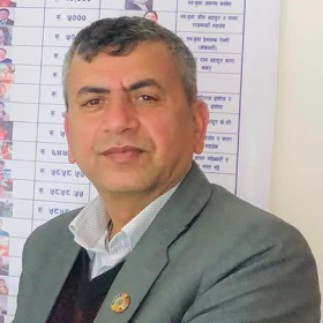Opinion
Teenage girls
Robust investment and partnership are essential to overcome the challenges that young women face
Jhabindra Bhandari
This year’s World Population Day, marked on 11 July, aims to focus on teenage girls. Evidence shows that teenage girls face several challenges globally. In most of the developing countries, adolescent girls are forced into marriage and motherhood, which has adverse impacts on their future. For many teenage girls, whether at home or school, access to basic information about sexual health and reproductive rights is limited. As a result, they are vulnerable to illness, injury and exploitation. In addition, poverty, child marriage, adolescent pregnancy and limited access to sexual and reproductive health services have severe impacts on the lives of many girls.
According to the United Nations Population Fund’s (UNFPA) world population report 2014, there are 1.8 billion young people between the ages of 10 and 24 in the world, and the youth population is growing fastest in the poorest nations. There are 600 million adolescent girls with specific needs, challenges and aspirations for the future. Sadly, they are denied the investments and opportunities they need to realise their full potential.
Early marriage
Every teenage girl has the right to a safe and successful transition to adulthood. But the reality is different in Nepal, where teenage girls face many challenges such as child marriage and early pregnancy. According to 2014 Nepal Multiple Indicators Cluster Survey, about 24.5 percent of girls between 15 and 19 years are currently married or in union. Moreover, 36.6 percent of girls between 20-24 years were married or in union before they were 18. Additionally, 16 percent of those have already had at least one live birth.
Further, access to family planning services is still limited for teenage girls in the country. The report also shows that 47.7 percent of girls between the age of 15 to 19 who are currently married or in union have an unmet need for family planning and are vulnerable to HIV and other sexually transmitted infections.
Not surprisingly, gender discrimination impedes the growth of young women in our society. They face discrimination in terms of access to education; more often than not, girls are taken out of school when they reach secondary level as they are expected to contribute substantially to household work and farming.
Considering the situation of teenage girls, the government of Nepal, with the support of the UN and other partners, aims to empower teenage girls by protecting their human rights and universal access to sexual and reproductive health services. There are several awareness activities and campaigns against child marriage and other harmful practices across the country.
Some national initiatives such as comprehensive sexuality education targeted to empower adolescents have been effective. For example, the UNFPA is providing a full range of information and life skills to enable adolescents and youths to make informed choices about their health and sexuality.
Similarly, adolescent-friendly services have been established in most of the health facilities around the country. As a result, access to sexual and reproductive health information and services for teenage girls has gradually improved over the years in Nepal. But it is not enough and much more effort is needed to ensure their reproductive health rights.
National plan
The government of Nepal has launched the National Plan of Action for Adolescent Development and Participation, which is a major landmark in terms of ensuring adolescent-sensitive national policies, plans and budget. It aims to ensure active and meaningful participation of adolescents in development activities.
There are some gaps in terms of implementation of the policy, strategy and plan of action. First, multi-sector coordination among line ministries, development partners, civil society organisations, the media and private sectors is lacking. Second, there is an emerging need to enhance the capacity of sectorial ministries and partners to mainstream the issues of adolescents in their strategic plans, which largely focus on poor and marginalised youths.
In addition, partnership with civil society organisations including media is instrumental in raising awareness about issues relating to adolescents and ensuring their participation in development. This is because civil society organisations can reach out to the poor and marginalised adolescents with relevant information.
Undoubtedly, adolescents are a vital part of any country and its development. Concerted efforts in education, health provision, gender equity and violence-prevention are needed to empower teenage girls. So robust investment and partnership are required to overcome the multitude of challenges faced by teenage girls in developing countries.
Bhandari is a PhD candidate in public health at Chulalongkorn University, Thailand. He can be reached at [email protected]




 5.4°C Kathmandu
5.4°C Kathmandu










%20(1).jpg&w=300&height=200)

